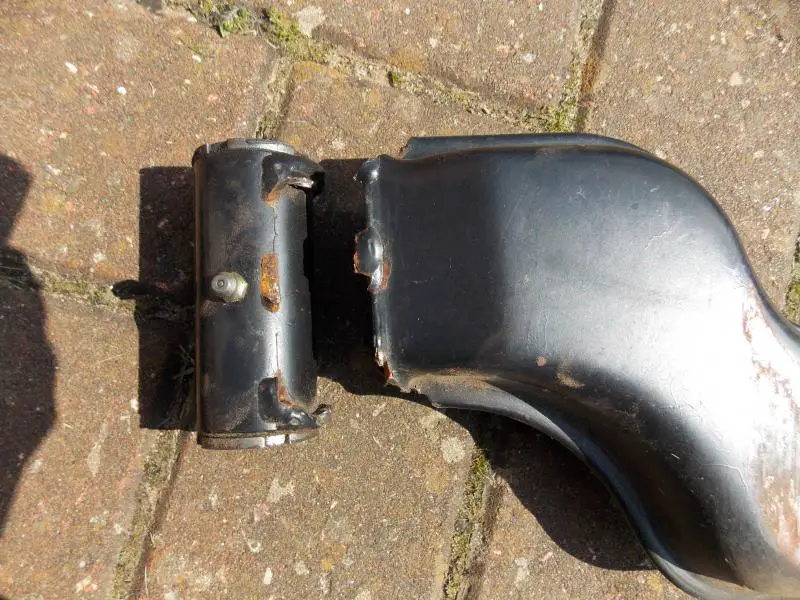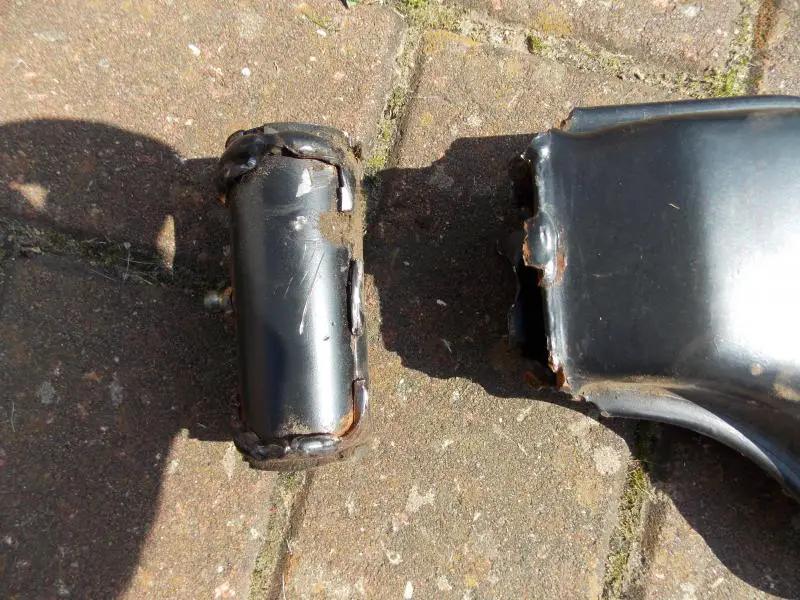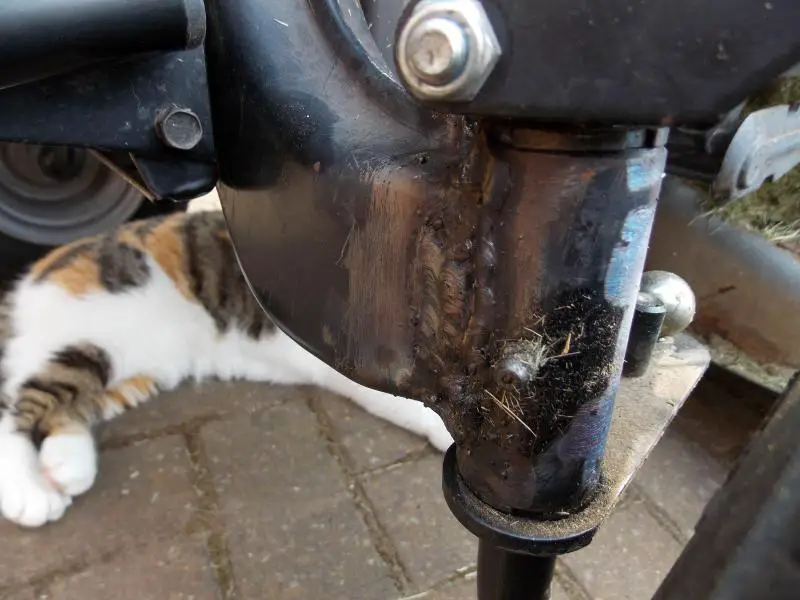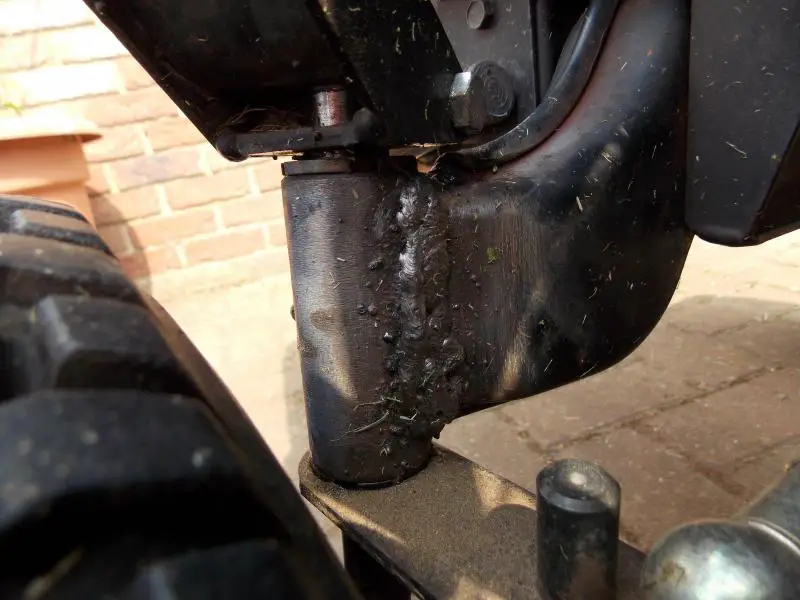I'm with John on MIG versus stick - I bought a cheap buzz box to do thicknesses that my 150A MIG can't do but just can't get the hang of it.
Looking at your pics it looks to me as if the metal is stainless or has some other coating on it and whoever welded it just basically welded the coatings together.
So first thing is to use a flap disk (preferably) or a grinder (way less preferable as you need to be very careful not to cut too deeply) to remove the coating.
Once you've done that, you're correct that you want to tack and then weld the entire seam.
How thick is the metal? Have a look at the table here to figure out how much amps you want to set your welder to.
http://www.mig-welding.co.uk/buying.htm
Ironically, you are likely to be able to dial an arc welder down to a far lower amperage than most (hobby) MIGs will manage.
So, if it's, say., 2mm thick then you want somewhere between 90A and 100A.
Once you have the amps set, the most common mistake is to wuss out and not spend enough time laying down the weld, leading to metal simply sitting on top of the base metal, rather than penetrating.
Of course, it's just as easy to spend too
long in the one spot and burn through

So if you have any steel of comparable thickness, have a practise run on that, first.
Apologies if this needs to be filed in the granny/egg/suck cabinet!






